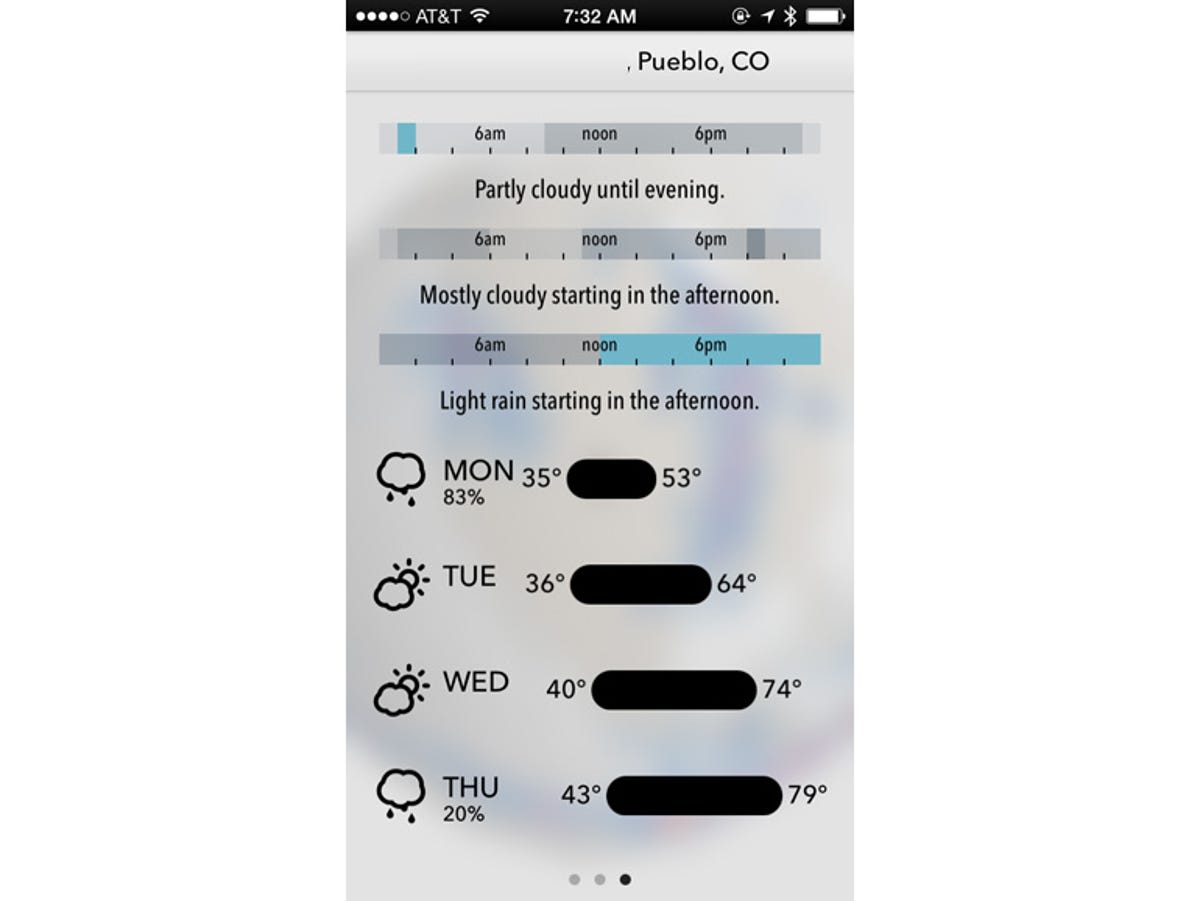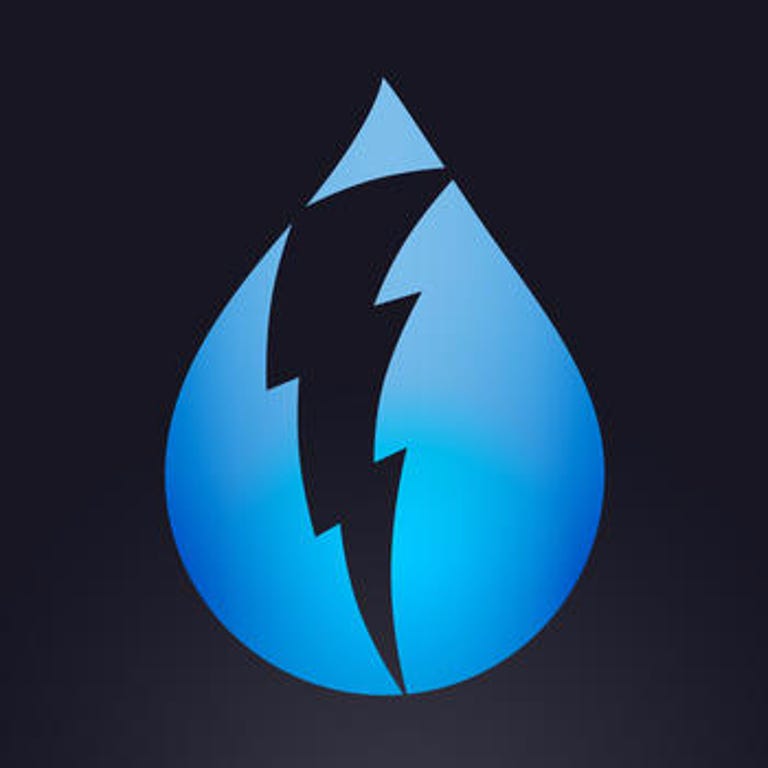 Why You Can Trust CNET
Why You Can Trust CNET Dark Sky review: Dark Sky is a weather app you won't mind paying for
There are tons of weather apps that give you the forecast and temperatures by the hour, but with this app, you can zero in on exactly when the weather will turn for the worse.
Dark Sky is a weather app that will make you do a double-take when you realize what it's capable of doing. Instead of just giving you the standard weather forecast (though it does that too), the developers of Dark Sky opted to go one step further and proactively alert you when nasty weather is heading your way.
The Good
The Bad
The Bottom Line
Predicting the weather is obviously not an exact science, but by using your exact location, Dark Sky is able to pull in data and tailor the app to give you the weather around you. It might be a bit pricey (currently at $3.99/£2.49), but the peace of mind you get in knowing you won't be caught in the rain is worth it.
Checking the weather
Like Apple's own Weather app, Dark Sky is able to provide you with current weather stats in addition to a forecast for the next seven days. But the layout it uses to display the information is a bit different than what you find in Apple's offering.
In Dark Sky, the default screen displays current temperature, "feels like" temperature, sky conditions, and a forecast for precipitation over the next hour. Along with the basic information, an hourly graph is constantly displayed, showing you the level of precipitation to expect over the next hour. Tapping anywhere on the screen will also display the current wind speed and direction, humidity, barometric pressure, and visibility.
Conversely, Apple's Weather app (which is only available on the iPhone) displays the current temperature, hourly forecast, and a forecast for the next seven days all on one screen. A small amount of additional information is available by tapping on the screen, but it lacks a precipitation guide, among other features we will get into in a minute.
To view more in-depth information in Dark Sky, you'll first need to learn how to navigate the app.

Navigating the app
Navigating through Dark Sky is accomplished by using a combination of gestures and taps. As I just mentioned, tapping on the main screen reveals extra current weather stats. Swiping from left to right will reveal an animated radar map displaying either precipitation or temperature. (Radar is something you won't find in Apple's weather app.)
Swiping in the opposite direction (right to left) reveals a 24-hour forecast in graph form, cloud forecast, and sunrise and sunset times. Another swipe in the same direction brings you to a seven day forecast. Each day has the forecast high and low temperatures along with percentage indicating chance of precipitation. Tapping on each respective day will display the hourly forecast for the day.
Navigation throughout Dark Sky is fluid and intuitive. After getting the general idea of what the various gestures were, I was able to quickly view the information I wanted without much effort.
Forecasts focus on the present
You might have noticed there's a theme of hourly forecasts within Dark Sky. This measure of time is arguably the most important part of Dark Sky -- it gives you the weather for your personal location at that particular moment.
In most instances, it can tell you -- to the exact minute -- when you should expect rain or snow to start falling from the sky based on your exact location. In other words, Dark Sky will alert you when it's time to take cover, and also lets you know when to expect the rain or snow to let up.
I was very skeptical of an app being able to accurately predict when rain was going to arrive the first time I heard about Dark Sky. After some internal debate, I bought the app and waited patiently for a rain storm to move in. To my surprise, Dark Sky nailed it. Not only did it tell me the time the rain was going to start, but the amount of rain to expect over the next hour.
Moreover, the alert feature has saved more than one of my picnics from being a victim to a random downpour. Overcast days can often make for the ideal day to eat outside, be it on the back porch or in a park -- especially when you're not a sun lover. But with overcast days, I never know when to expect rain. With Dark Sky I can go about my day and get alerts whenever the weather is about to turn sour.
It's important to note that in order to provide you with these alerts, Dark Sky needs to run in the background, pulling your location data and refreshing weather conditions -- all of which can be a drain on your battery. For that reason, I recommend only using the alert features when you plan on being outside for an event or extended amount of time.
Accuracy
Anyone who regularly watches a local newscast can tell you the weather forecast is semi-accurate at best. I have found Dark Sky to be amazingly accurate for the most part, but there have been times when it steered me wrong.
On a few different occasions I've opened the app only to find it says I should expect rain within the next hour, when I can already see there's not a single cloud in the sky. The inaccuracies have mostly come when visiting family in neighboring, smaller cities. I assume it's due to those locations not having sufficient radar coverage to accurately predict storms. But then again, the lack of clouds in the sky should be detectable by nearly any radar. It hasn't happened often, but it has happened and should be mentioned.
Conclusion
Not only does Dark Sky have the flattened, elegant look you expect from an iOS 7-specific app, it has features that should have been included in Apple's weather app to begin with. While I know the app is clearly just pulling in weather data and tailoring it to me, when I see it start to rain (as predicted) at 3:20 pm on the dot, it's almost like some sort of black magic.
Hocus-pocus aside, if you're constantly finding yourself caught without an umbrella, or wondering what kind of clothes to pack for a picnic, Dark Sky is the app for you. Not only does it tell you when rain or snow is likely going to start, but it tells you when it's going to end, letting you make plans around the weather. For these features, I had no problem spending 4 bucks, and you shouldn't either.


